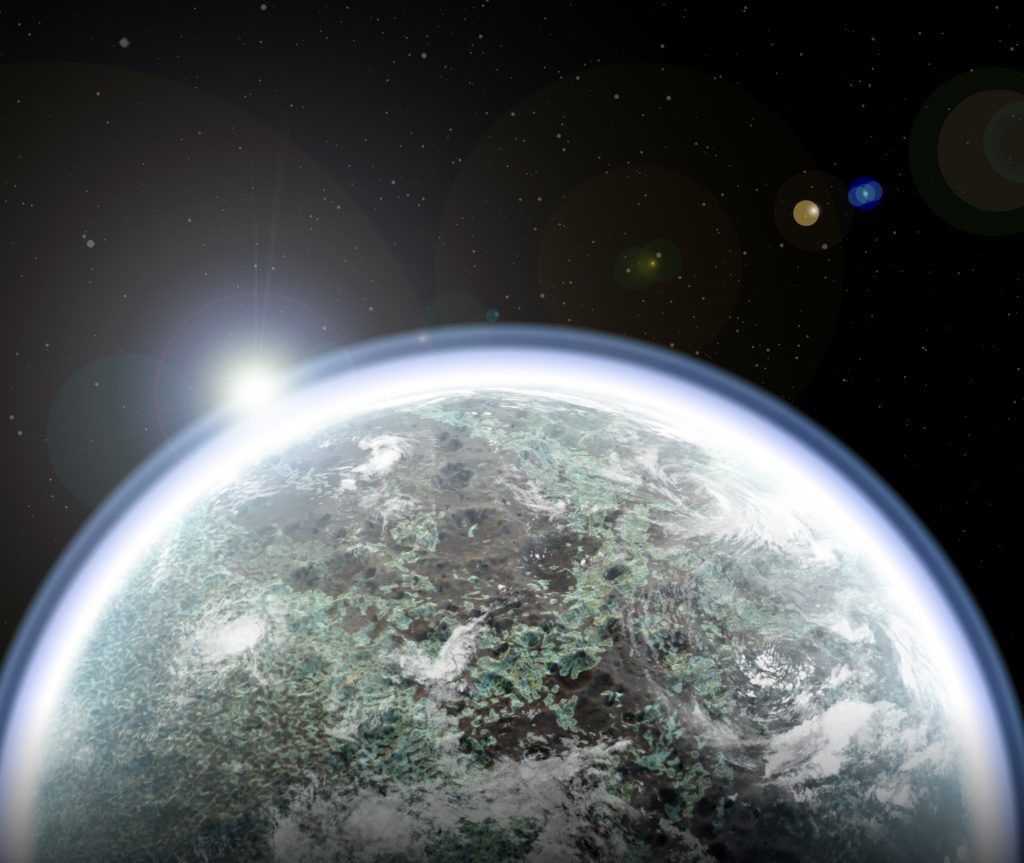
Ancient Mars may not have been all that warm and wet after all.
The Red Planet has widespread deposits of clay minerals, which are formed via the interaction of volcanic rock and water. This fact has led some researchers to suspect that liquid water covered much of the Martian surface for extended stretches long ago — perhaps during the Noachian period, which lasted from about 4.1 billion to 3.7 billion years ago.
But a new study suggests that these clays could have formed even longer ago, right after the planet's formation — meaning the Noachian may well have been a mostly dry and chilly time, as other scientists have posited. [The Life on Mars Search: Photo Time Line]
"This is a very contentious and ongoing debate," said study lead author Kevin Cannon, who is now a postdoctoral researcher at the University of Central Florida but performed the study work while a Ph.D. student at Brown University in Rhode Island.
"I'd say, right now, it's sort of leaning more toward the idea that Mars was mostly cold and dry during that time, and that you just had these 100- or 1,000-year periods where temperatures got a little bit warmer — enough to have melting and runoff, but maybe not enough to significantly alter the crust and form a bunch of clays and things like that," Cannon told Space.com.
An ancient steam bath?
Cannon and his colleagues are proposing a new formation scenario for Mars' ancient clays: that most of them took shape during the first few tens of millions of years of the planet's existence.
In those very early days, Mars was likely covered by a scorching-hot ocean of liquid rock (as were the other rocky planets, including Earth), scientists say. As this rock melted, it released water vapor, carbon dioxide and other gases, generating a steamy, superhot, high-pressure atmosphere on the Red Planet.
Get the Space.com Newsletter
Breaking space news, the latest updates on rocket launches, skywatching events and more!
The study team synthesized rock similar to Martian basalt, then exposed the stuff to the steam-bath conditions that likely prevailed on the Red Planet's surface way back when. After a mere two weeks, the researchers found, a lot had happened.
"It was really remarkable how quickly and extensively this basalt was altered," Cannon said in a statement. "At the highest temperatures and pressures, it ate completely through the basalt particles. It's a really intense degree of alteration."
The steam atmosphere may have persisted for up to 10 million years — long enough to create a global clay layer 1.9 miles (3 kilometers) thick, the researchers said. So they modeled what would happen to such a layer over the ensuing 4.5 billion years of Martian history, as volcanic eruptions covered many clay deposits and asteroid and comet impacts unearthed others.
The modeling results accord well with what orbiters and rovers actually see on the Red Planet, Cannon said.
"To put some numbers on it, clays cover about 3 percent of the oldest crust exposures on Mars," he said in the statement. "We're finding about that same order of magnitude in these models."
Getting an answer
The new study, which was published online today (Dec. 6) in the journal Nature, doesn't prove anything. But it does make some testable predictions that could help researchers learn more about the Red Planet's ancient climate, study team members said.
For example, noble gases such as krypton and xenon were likely quite common in the primordial outgassed atmosphere, Cannon told Space.com. So finding lots of these elements in the Martian clays would support the steam-bath hypothesis advanced in the new study.
Such measurements probably can't be made from orbit, Cannon added: They would require the work of a sophisticated rover on site or, even better, analysis of returned Martian samples in well-equipped labs here on Earth.
NASA's next Mars rover, which is due to launch in 2020, will collect and cache samples for eventual transport to Earth. But that return is merely conceptual at the moment; there is no mission on the space agency's books to bring such samples to our planet.
Follow Mike Wall on Twitter @michaeldwall and Google+. Follow us @Spacedotcom, Facebook or Google+. Originally published on Space.com.
Join our Space Forums to keep talking space on the latest missions, night sky and more! And if you have a news tip, correction or comment, let us know at: community@space.com.

Michael Wall is a Senior Space Writer with Space.com and joined the team in 2010. He primarily covers exoplanets, spaceflight and military space, but has been known to dabble in the space art beat. His book about the search for alien life, "Out There," was published on Nov. 13, 2018. Before becoming a science writer, Michael worked as a herpetologist and wildlife biologist. He has a Ph.D. in evolutionary biology from the University of Sydney, Australia, a bachelor's degree from the University of Arizona, and a graduate certificate in science writing from the University of California, Santa Cruz. To find out what his latest project is, you can follow Michael on Twitter.









